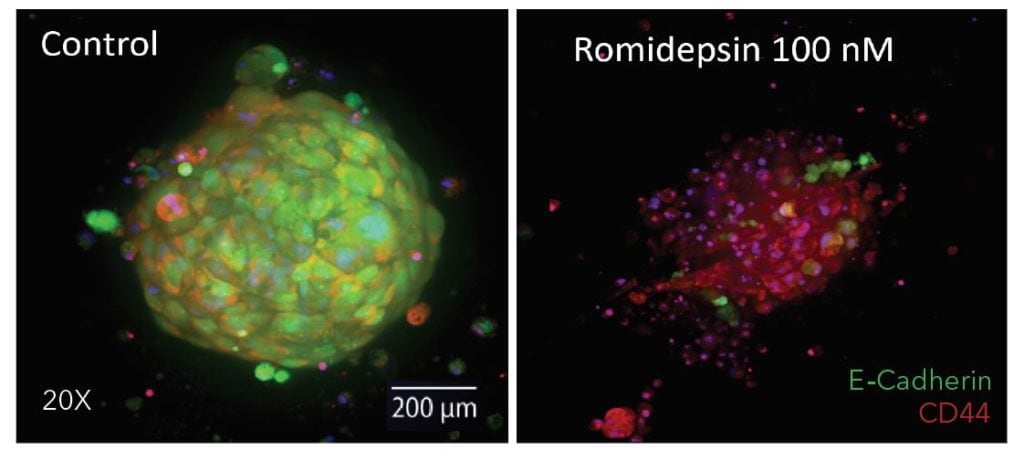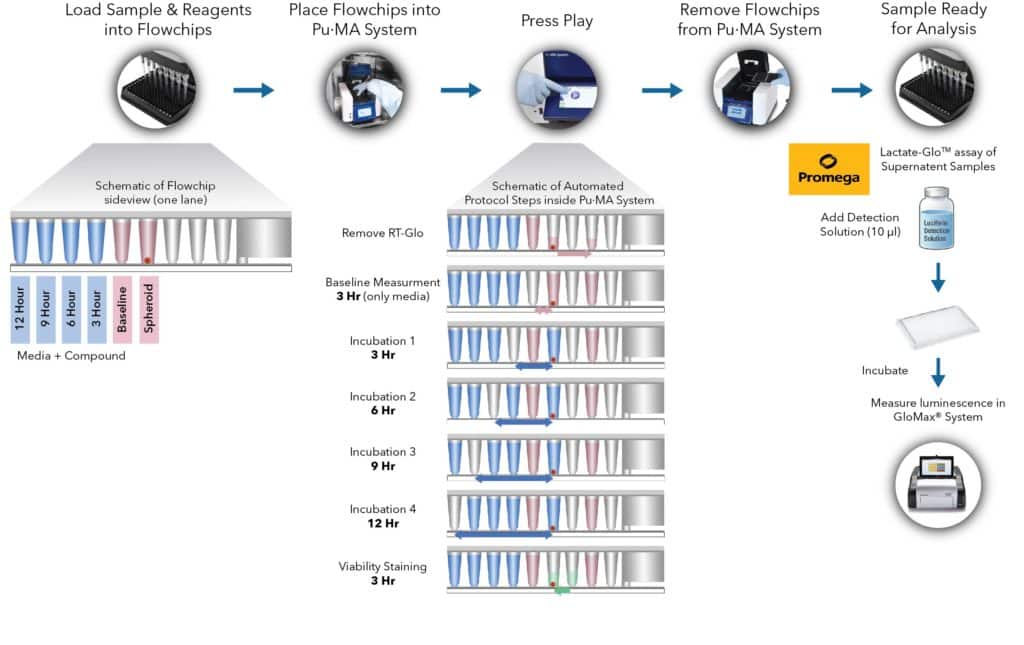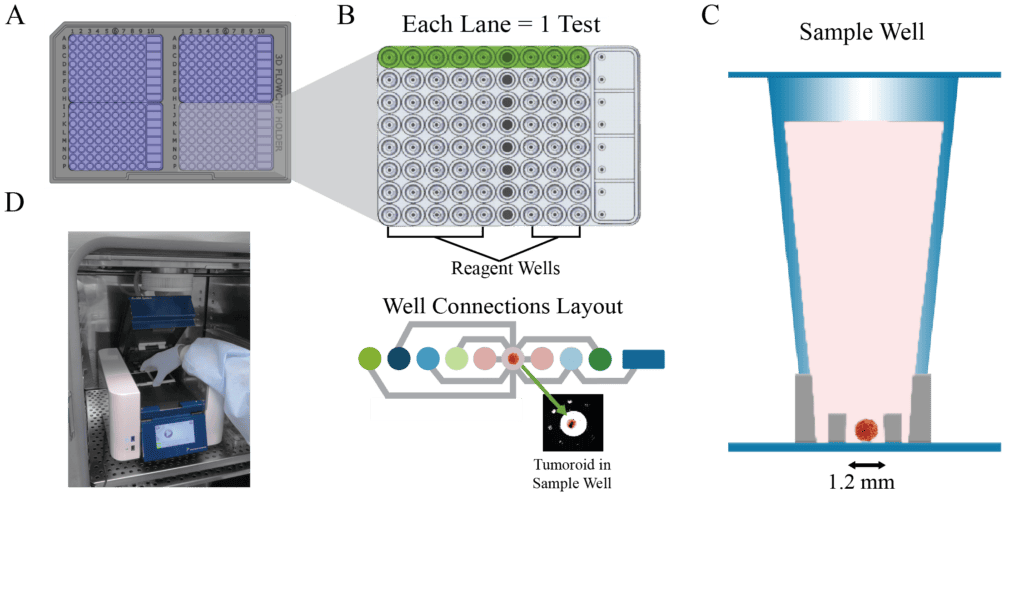In Situ Supernatant Sampling
One of the key steps during an assay is to analyze various secreted factors from organoids or 3D cell models. This is important for research in drug discovery, compound screening or understanding the biology of the organoids. Normally this process is very manual and labor intensive. Also, taking plates out of the incubator environment can affect the physiological response.
The Pu·MA System 3D enables automated in situ supernatant sampling as a part of the workflow within the flowchips. You can collect supernatants at multiple time points during the course of an assay without disturbing the spheroid or organoid. The conditioned media collected can then contribute to further phenotypic and physiological information about the 3D cell models being studied.
The tabs below showcase this application of in situ supernatant sampling using the Pu·MA System.

Automated In Situ Sampling and Metabolite Analysis from Tumoroid Samples
This schematic demonstrates the use of the Pu·MA System for timed in situ sampling along with drug treatment followed by analysis of secreted metabolites using metabolite assays from Promega.

Automated In Situ Sampling and Metabolite Analysis from Tumoroid Samples
This tech note demonstrates automated timed in situ sampling along with drug treatment using the Pu·MA System followed by analysis of secreted metabolites with Promega assays.
You can learn how you can:
- Collect up to 7 custom timed supernatant samples
- 20X reduction in pipetting steps compared to manual procedure
- Only 15-min flowchip prep time & 5-min protocol set-up time
- >95% fluid transfer reproducibility
Monitoring metabolite dynamics in patient-derived tumoroids using automated microfluidic Pu·MA System
We presented this data at AACR2022 on automated time-course sampling of supernatants from breast cancer tumoroids coupled with highly sensitive luminescence-based assays for important metabolites, in this case, lactate using Promega’s Lactate-Glo assay . We showed the use of Pu·MA System for multifunctional profiling metabolite analysis of patient-derived tumoroids to different drug treatments and its use in disease modeling.
Multifunctional profiling of triple-negative breast cancer patient-derived tumoroids for disease modeling
Cromwell EF et al., SLAS Discovery (2022) Feb 4; S2472-5552(22)00011-9. Online ahead of print. epub link

Here is a clip from an event recording:
Watch full recordings:
Assessing Metabolic State of 3D Tumor Models
In this joint webinar by Protein Fluidics and Promega, scientists will showed how 3D-optimized metabolite assays can be used with cell models to assess their metabolic state. An automated Pu·MA System workflow to capture dynamic metabolite secretion from patient-derived tumoroids was featured.
Contact Us
Protein Fluidics, Inc.
26219 Eden Landing Rd
Hayward, CA, 94545
+1 650 529 5080
info@proteinfluidics.com
#pumasystem #flowchip #3dcellassay
Our Company
